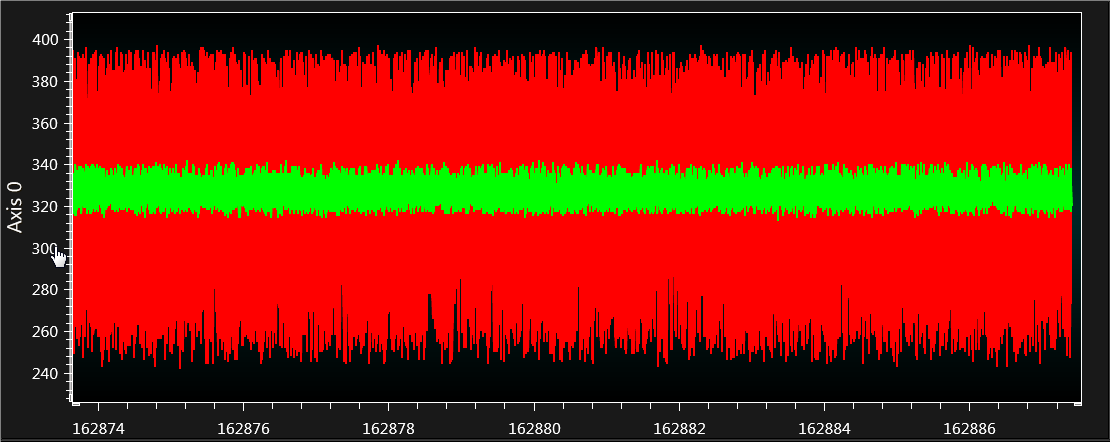4.5.4.2 DC Signal With Random Noise
- ADC2 computation mode: Burst Average mode
- Input signal: DC ~1V + random noise 0.5V peak-to-peak
- Verify the computation mode number in the Data Visualizer graph is shown as 4 and that LED D4 is illuminated
- Configure Signal & Noise Generator to generate a DC signal of ~1V and random noise with 0.5V peak-to-peak
- Verify the input signal using an oscilloscope
The Data Visualizer graph is as shown in Figure 4-16. The red colored signal is a noisy input signal (ADRES value), the green colored signal is the filtered signal (ADFLTR value).
From the graph, it can be seen that the noise has been suppressed using ADC2 Burst Average mode. In example source code averaging has been done with 32 samples as ADCRS bits configured to 5. The graph looks almost similar to the graph for Basic mode, Accumulate mode, and the Average mode where the ADC count of filtered signal (green colored signal) can be seen as ~ 315 to 340.
In Burst Average mode, the ADC count may vary more randomly than in other modes. Here the samples are accumulated in a burst. This means that once the conversion is triggered ADC samples are continuously read until 32 samples are collected. Because of this the noise filtering may not be as effective as other modes.
Use case: This mode can be useful in application where the input signal is relatively noise free and ADC resolution needs to be increased by oversampling.

Pros: Using this mode, the ADACC register gives accumulated values of up to 64 samples and the ADFLTR register gives an average value of all the accumulated samples in a single burst. Software overhead can be avoided.
- The number of samples accumulated is limited to 64
- Noise reduction is comparatively less effective than the Basic, Accumulate, and Average mode
- The ADC sampling rate is affected by the number of samples accumulated in a single burst. Total conversion time for m samples is the multiplication of conversion time for one sample and m, the number of samples. In this example, the ADC Conversion Time is configured to 11.5 μs. So with a burst of 32 samples, total conversion time is 11.5 x 32 = 368 μs
